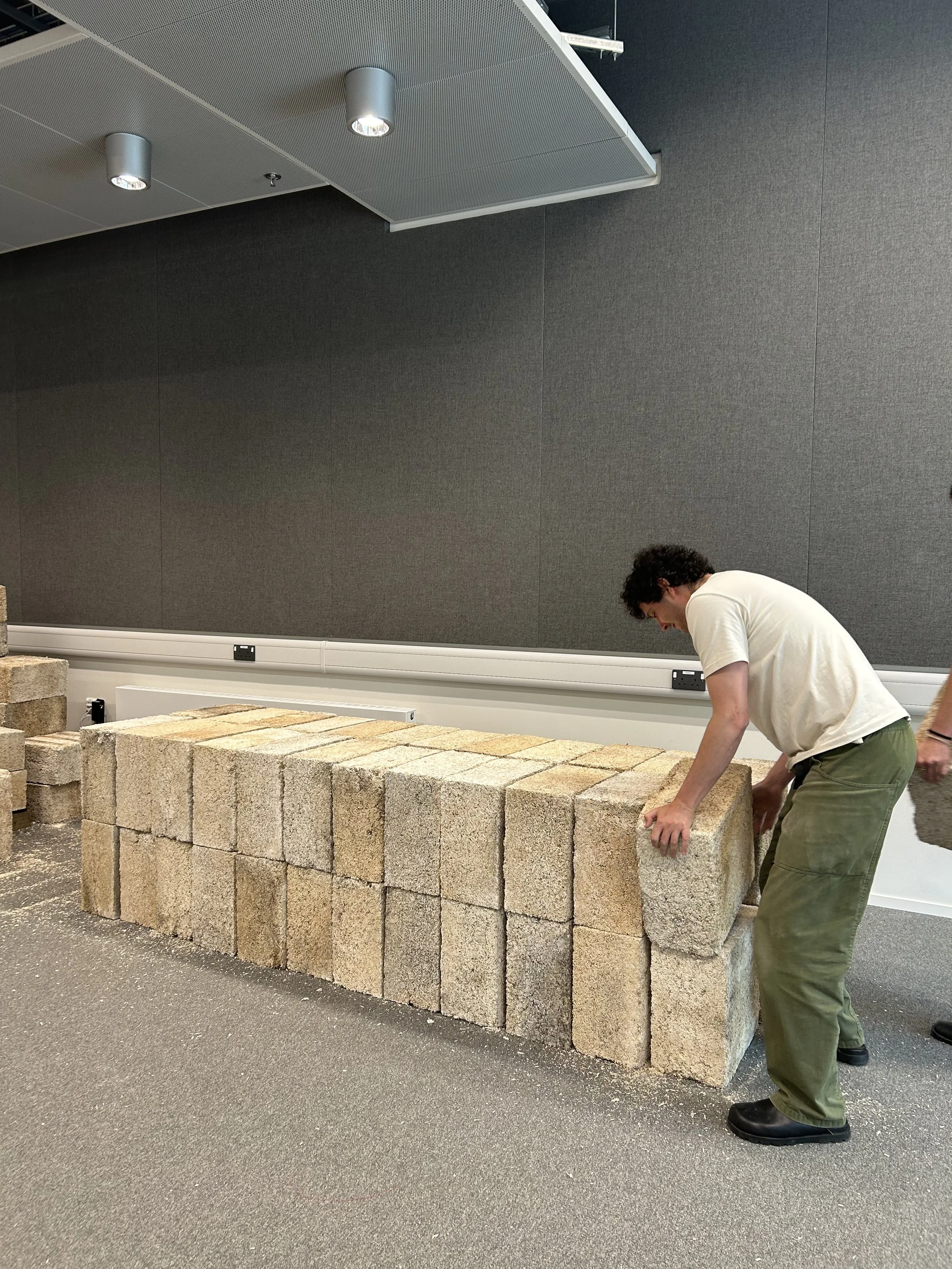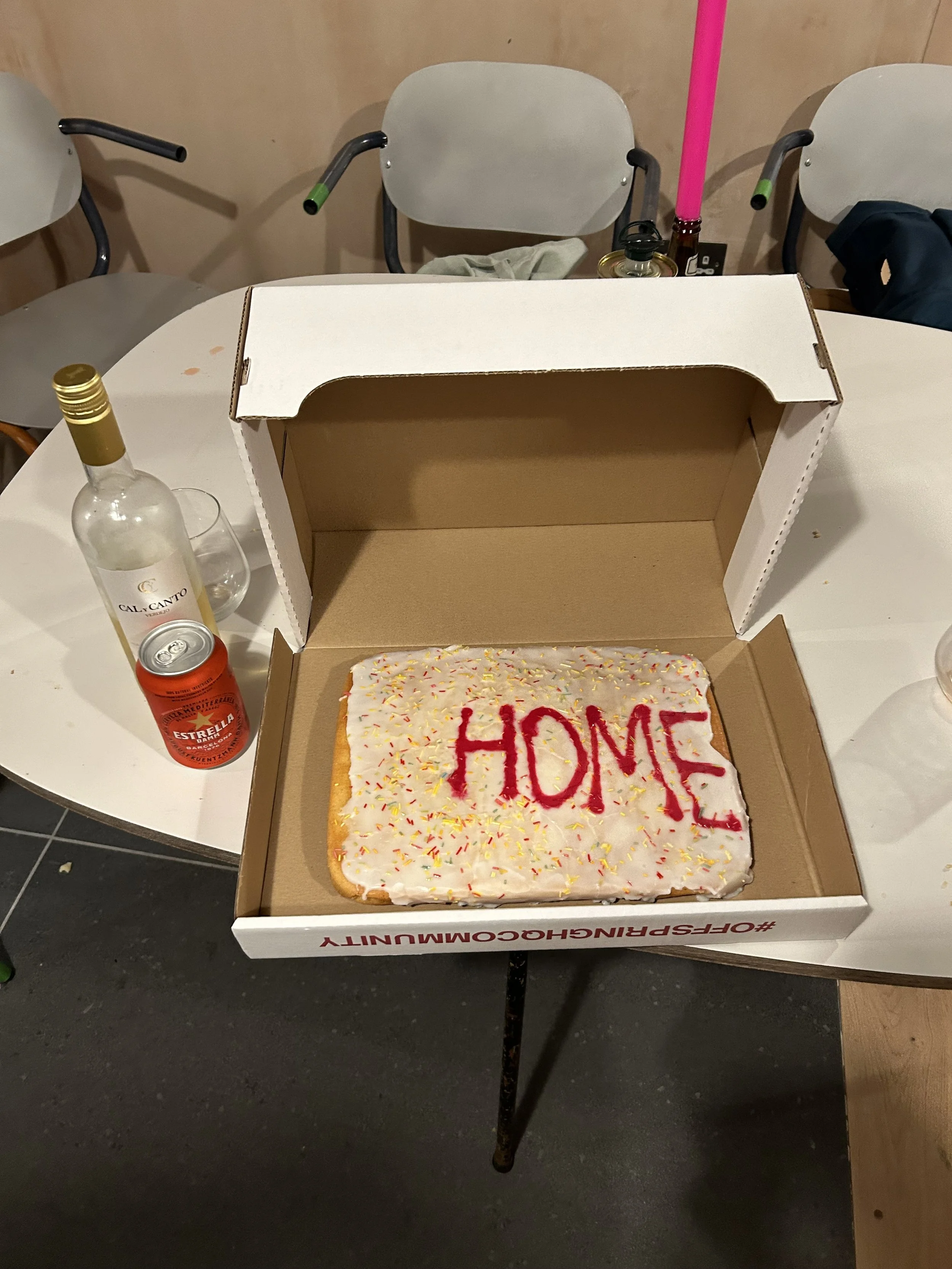A brutal catwalk
I put a jumper on and my partner says “NO”. We are sorting through clothes, most still in bags from when we moved. A brutal catwalk sorts the garments into three piles, sell (charity), bin (recycle), keep (really?). I get a text from my cousin offering me a box of silicone sealant tubes - he’s moving house and clearing out his basement and thought of me. In my rogue outfit, I look up at my roof and assess if I could use the sealant over the coming winter months.
Moving hemp blocks for a temporary exhibition A cake that was made for me signalling home
Moving situations like this can be resourceful or wasteful, and it usually depends on the pace it is done at. It takes a lot longer to arrange a chaotic space - to question the value of each object to you and your ability to re-home it - than throw the whole lot in the bin. It begs the question, are the cleanest basements the ones producing the most amount of trash? This logic certainly applies to a lot of industries that quickly construct and dismantle, like shop fit outs, exhibitions, popups and set builds. Projects in these spaces often work back from a fixed vision, where materials and construction techniques are applied to make something look a certain way (usually very clean and clear!) for a short period of time.
However, we can also learn a lot from well designed fast paced temporary structures. Structures that need to be light, strong, durable and fixable. Scaffolding, trestle tables, stage deck, tents and folding chairs. Structures that function in construction, application, deconstruction, transport and storage. These are the structures that can work at speed and in circular economies, not primarily for sustainability reasons, but because it makes sense.
A picture from our workshop ‘No Stresstles’ with Store Store, where we transformed waste material in to a series of trestles. These trestles were used to form the tables for the students to share meals with each other, and the site of future workshop sessions.



